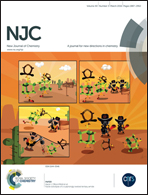Wettability properties vary with different morphologies of ZnO nanoparticles deposited on glass and modified by stearic acid
Abstract
Surface wettability can be affected by surface energy and/or morphology variations. A simple immersion method in conjunction with different zinc sources, hexamethylenetetramine (HMT) and ethylene diamine (EDA) as starting materials were employed for the deposition of zinc oxide (ZnO) nanoparticles on a glass surface. The effects of various parameters, including EDA concentration, stearic acid (STA) concentration, immersion time in STA solution and especially the various zinc sources, on the morphology and density of deposited particles were investigated. The differences in topography led to different wettability states. The highest water contact angle (WCA) and the lowest sliding angle (SA) were achieved on the glass substrate when the concentration of EDA was 45 mM. Moreover, a 14 mM STA solution and an immersion time in this solution of 30 min were the optimized conditions under which a superhydrophobic (SH) state was reached. For the zinc source effect, it was observed that three types of zinc sources (Zn(NO3)2, ZnCl2 and ZnSO4) resulted in more condensed nanoparticle deposition and consequently, yielded a SH state after STA modification. In addition, Zn(NO3)2 as the zinc source led to a SH state with the highest WCA on the glass substrate. Moreover, Zn(AC)2 as the zinc source created an irregular and non-condensed distribution of nanoparticles, which did not possess dominant SH characteristics. Finally, different identification methods were used to demonstrate the resulting morphologies and confirm ZnO and STA grafting on the glass substrate.


 Please wait while we load your content...
Please wait while we load your content...